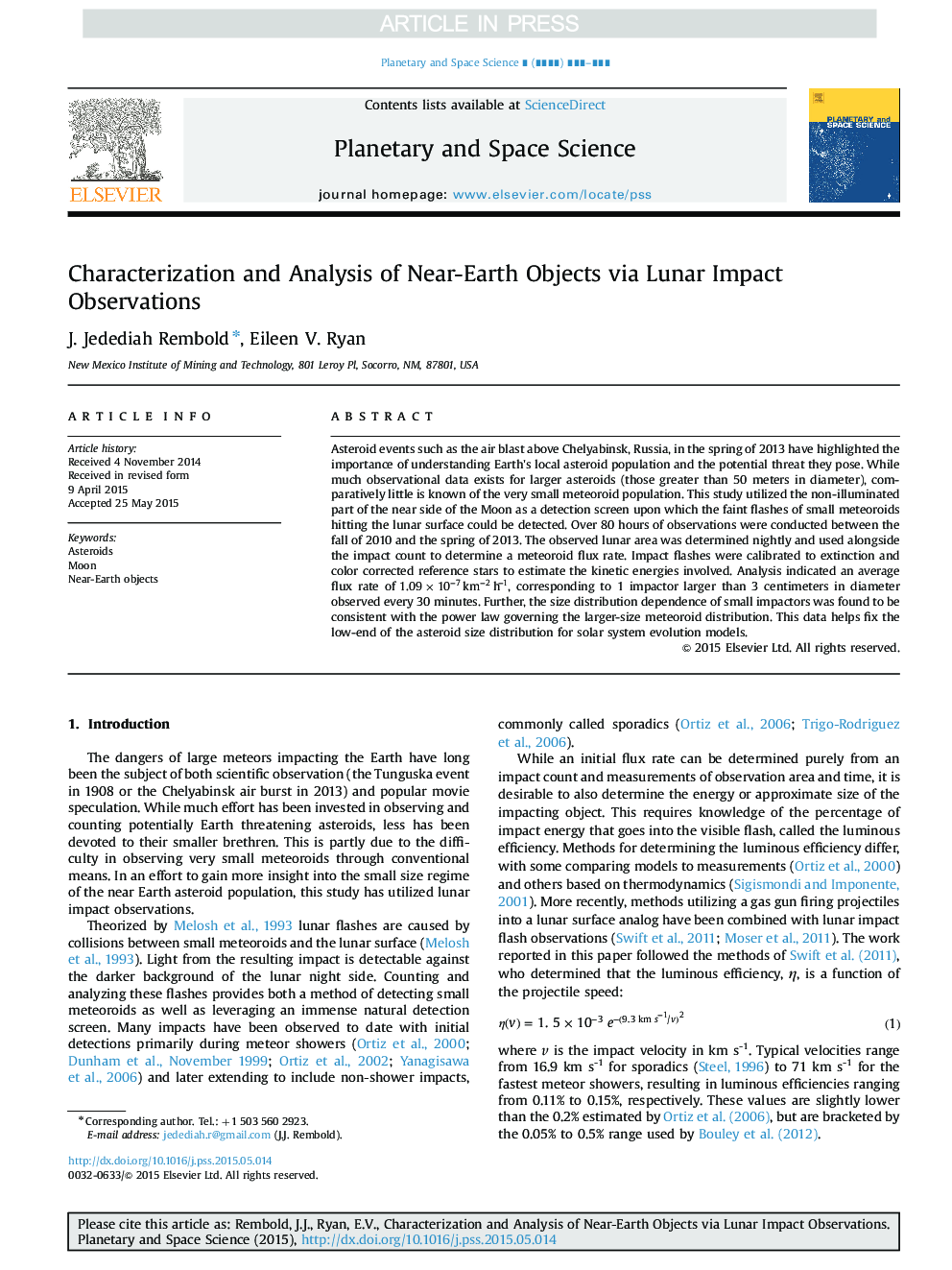| Article ID | Journal | Published Year | Pages | File Type |
|---|---|---|---|---|
| 8143044 | Planetary and Space Science | 2015 | 8 Pages |
Abstract
Asteroid events such as the air blast above Chelyabinsk, Russia, in the spring of 2013 have highlighted the importance of understanding Earth's local asteroid population and the potential threat they pose. While much observational data exists for larger asteroids (those greater than 50 meters in diameter), comparatively little is known of the very small meteoroid population. This study utilized the non-illuminated part of the near side of the Moon as a detection screen upon which the faint flashes of small meteoroids hitting the lunar surface could be detected. Over 80 hours of observations were conducted between the fall of 2010 and the spring of 2013. The observed lunar area was determined nightly and used alongside the impact count to determine a meteoroid flux rate. Impact flashes were calibrated to extinction and color corrected reference stars to estimate the kinetic energies involved. Analysis indicated an average flux rate of 1.09Ã10â7kmâ2hâ1, corresponding to 1 impactor larger than 3 centimeters in diameter observed every 30 minutes. Further, the size distribution dependence of small impactors was found to be consistent with the power law governing the larger-size meteoroid distribution. This data helps fix the low-end of the asteroid size distribution for solar system evolution models.
Keywords
Related Topics
Physical Sciences and Engineering
Earth and Planetary Sciences
Geophysics
Authors
J. Jedediah Rembold, Eileen V. Ryan,
